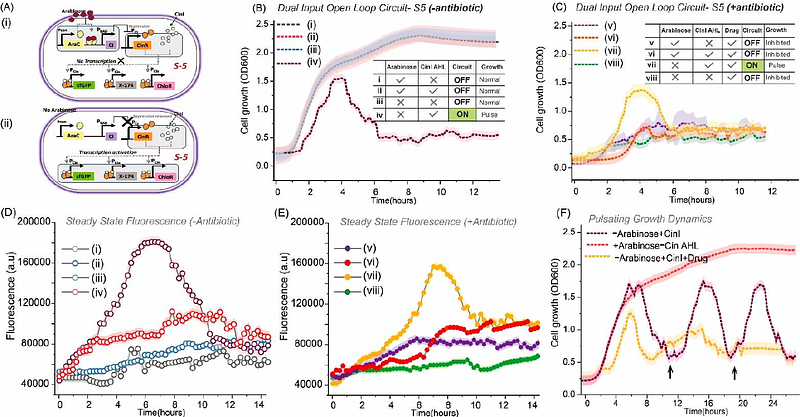Design of a Modular Inducible Circuit for Pulsatile Population Control of Engineered Bacteria

Design of a Modular Inducible Circuit for Pulsatile Population Control of Engineered Bacteria
Roy, R.; Mayalu, M. N.
AbstractSynthetic biology enables the precise control of bacterial population dynamics through engineered genetic circuits, paving the way for innovative therapeutic and biosensing applications. Here, we present genetic circuit design that leverages AHL (acyl-homoserine lactone)-based quorum sensing and a transcriptional cascade regulated by an external inducer to drive synchronized proliferation and lysis events. In this system, the absence of the inducer arabinose prevents CinR mediated repression, enabling activation of a transcriptional cascade that drives the expression of the lysis protein, fluorescent protein, and a drug resistance gene. The accumulation of AHL acts as a proxy for population density and modulates gene expression through a quorum-sensing mechanism. This inducible circuit provides tunable and pulsatile control over bacterial population dynamics, enabling cycles of population growth and collapse. Such behavior prevents premature population clearance while ensuring functional bacterial densities for extended durations. Our system represents a foundational step toward implementing more complex multi-stable architectures for self-regulation of bacterial population. This dynamic and modular framework offers significant advantages for therapeutic interventions, such as self-regulating drug delivery, inflammation-responsive probiotic therapies, and targeted bacterial therapy.